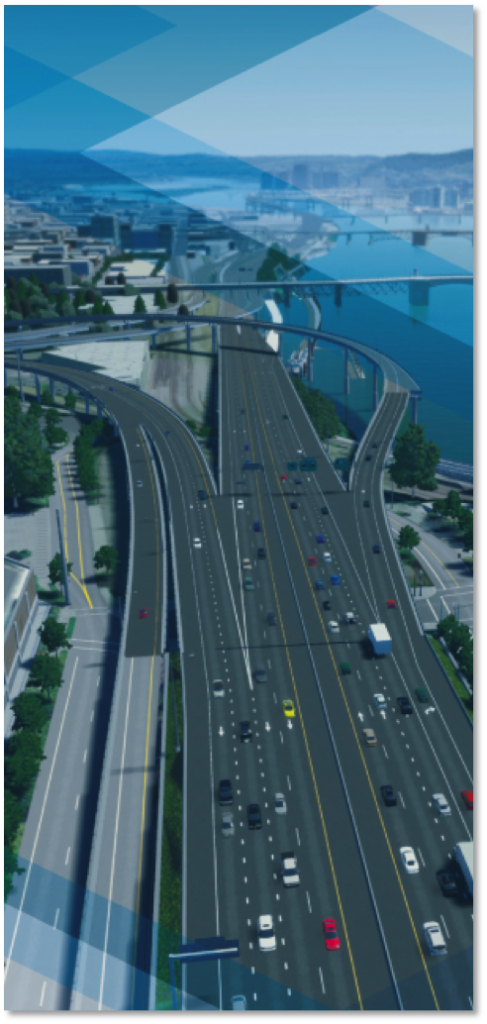What City Observatory did this week
A reporter’s guide to congestion cost studies. For more than a decade, we and others have been taking a close, hard and critical look at congestion cost reports generated by groups like the Texas Transportation Institute, Tom-Tom, and Inrix. The reports all follow a common pattern, generating seemingly alarming, but simply ginned-up pseudo-statistics about how much congestion supposedly “costs” us. As we point out, you could calculate even higher estimates of time lost in travel because we don’t all have flying cars. The number would be vastly higher than the imagined “losses” due to not being able to drive fast all the time, and just as realistic.
Here we’ve published a reporter’s guide to these reports, something we hope those in the media will consider before they publish yet another extreme telephoto image of freeway traffic along with an uncritical recitation of these highly questionable statistics.
Another flawed Inrix congestion cost report. It’s back, and its still bad, the 2023 version of the Inrix traffic scorecard. Like previous editions, this uses a fundamentally flawed concept (the travel time index) to construct absurd estimates of the supposed “cost” of road congestion. The report’s estimates assume there’s some feasible (and cost-effective) way to enable all travelers to travel at “free flow” speeds every hour of every day. We know (see our leading Must Read article below) that widening roads doesn’t produce faster traffic speeds.
This is just more myth and misdirection from highly numerate charlatans. Plus, this year’s report buries a pretty startling lede: Traffic congestion is now lower than it was in 2019, and congestion declined twice as much as the decline in vehicle travel. That factoid alone should prompt policy makers to look seriously at demand management, via congestion pricing, if we’re serious about congestion.
The case against the I-5 Rose Quarter Freeway widening project. Portland is weighing whether to spend as much as $1.45 billion dollars widening a mile-long stretch of the I-5 freeway at the Rose Quarter near downtown. We’ve dug deeply into this idea at City Observatory, and we’ve published more than 50 commentaries addressing various aspects of the project over the past four years. From massive cost-overruns, to flawed traffic projections, to phony claims that this is a “safety project,” to a new freeway off-ramp that endangers bikes, pedestrians and other users with a dangerous hairpin turn, there’s plenty not to like about this project. We summarize more than 50 City Observatory commentaries we’ve published over the past four years.
Must Read
Yet more media coverage of the fundamental law of road congestion. The New York Times has a powerful and visual summary of the growing evidence for the the role of induced travel in erasing the promised travel benefits of freeway expansion projects.
Across the country, in Los Angeles, New Jersey and Houston, freeway widening projects have utterly failed to reduce congestion Writer Eden Weingart offers a simple explanation:
When a congested road is widened, travel times go down — at first. But then people change their behaviors. After hearing a highway is less busy, commuters might switch from transit to driving or change the route they take to work. Some may even choose to move farther away.
And this story is bolstered by an impressive and growing body of scientific evidence.
“It’s a pretty basic economic principle that if you reduce the price of a good then people will consume more of it,” Susan Handy, a professor of environmental science and policy at the University of California, Davis, said. “That’s essentially what we’re doing when we expand freeways.”
The article helpfully cites several of the research papers on the subject, and quotes Matt Turner, co-author of the definitive “fundamental law of road congestion,” on the willful ignorance of those who still deny the reality of induced travel:
“If you keep adding lanes because you want to reduce traffic congestion, you have to be really determined not to learn from history,”
But state highway departments, flush with billions of dollars in federal infrastructure funds, are primed to squander them in another futile and counterproductive round of freeway construction.
New Knowledge
European cities are getting denser. For many decades, cities around the world have generally been growing less dense: housing and population have tended to sprawl outward from city centers. A new article looks at patterns in European densification, and finds a surprising reversal of this trend in many, though not all, European cities.
The paper’s key findings are summarized in maps showing the European cities that became more dense (blue) and those that became less dense or sprawled (red) in two successive time periods, (2006-2012 and 2012 to 2018). In the early period, most European cities were becoming less dense. In the latter period, cities in much of the center of Europe became more dense.
The exceptions in the latter period were in Iberia and Eastern Europe–which got less dense over time. Strikingly, density gains were recorded in much of the UK, France, Germany and Italy. This recent, and now relatively widespread increase in densities may signal an urban resurgence.
The author’s point out that the housing supply plays a key role in facilitating a quick reversal to densification. The decline in density in the previous decade (and perhaps earlier) provided sufficient housing supply for many cities to grow more dense with population growth. As the author’s explain:
By densifying, many cities in the sample could accommodate a great population increase in a short period of time with only little expansion of residential areas. This means that a buffer capacity of unused housing stock was available to satisfy the new demand. In cities with long-lasting densification trends, specific policies, e.g. on urban regeneration, may increase the availability of housing units within the urban boundaries.
In the US, low rates of housing vacancy, especially in superstar cities, make it hard to densify quickly, because adding population requires building more housing.
Chiara Cortinovis, DAvide Geneletti & Dagmar Haase, Higher immigration and lower land take rates are driving a new densification wave in European cities,Urban Sustainability Volume 2, Article number: 19 (2022).
In the News
Our analysis showing that widening the Katy Freeway did nothing to reduce average travel times in Houston was quoted in this week’s New York Times article on the futility of road widening to lessen congestion.
Streetsblog featured comments from City Observatory’s Joe Cortright in its analysis of the latest Inrix congestion cost report.







